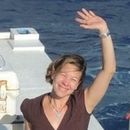Here we introduce Junior Professor Heike Kalesse-Los from the Institute for Meteorology at our faculty. You will find information about her career, research and teaching, as well as an advice she would give herself as a student.

Many ways will lead to a goal, and detours are often worthwhile because you learn more about yourself and the world, than on the most direct (career) paths.
Jun-Prof Dr Heike Kalesse-Los
Career
- 2006: Completion of Studies
Meteorology, Diplom
Universität Leipzig
Thesis: “Hygroscopic behaviour and simulation of the aerosol extinction in South East China at ambient conditions“ - 2010: Doctorate
Dr rer nat, Atmospheric Physics
Johannes Gutenberg-Universität Mainz
Topic: “Influence of ice crystal habit and cirrus spatial inhomogeneities on the retrieval of cirrus optical thickness and effective radius“ - 2011–2014: Postdoc
McGill University, Montreal, Canada - 2015–2018: Postdoc
Leibniz Institute for Tropospheric Research, Leipzig -
since 2018: Junior Professor (Tenure Track) for Remote Sensing of the Atmosphere and Arctic Climate System
Universität Leipzig, Institute for Meteorology
Research
My research group’s focus is to use ground-based synergetic remote sensing instruments such as Doppler cloud radars, microwave radiometers, micro rain radars, disdrometers, and lidars to answer scientific questions related to cloud evolution, precipitation formation, and wind.
The development of machine-learning-based derivation algorithms, to derive various microphysical cloud and precipitation parameters from the instrument variables, such as the distribution of liquid water and ice in mixed-phase clouds, the shape of ice particles or the degree of riming of ice crystals, the occurrence of secondary ice formation, or the precipitation type (stratiform vs. convective), plays a major role in my research group.
Since our instruments are mobile, we can study clouds in different regions of the world. Some of our field campaigns led us to the Arctic, Patagonia, the trade wind region of the Atlantic, and the Rocky Mountains of the USA, which allows us to study different types of clouds and precipitation.
In the field of renewable energies, we are researching the extent to which short-range forecasts of wind farm feed-in power improve when additional wind measurements from anemometers and wind lidars are included in the forecasts. Furthermore, we are also interested in using our measurement instruments for novel deployments, e.g. in the field of interactions between climate change and biodiversity research.